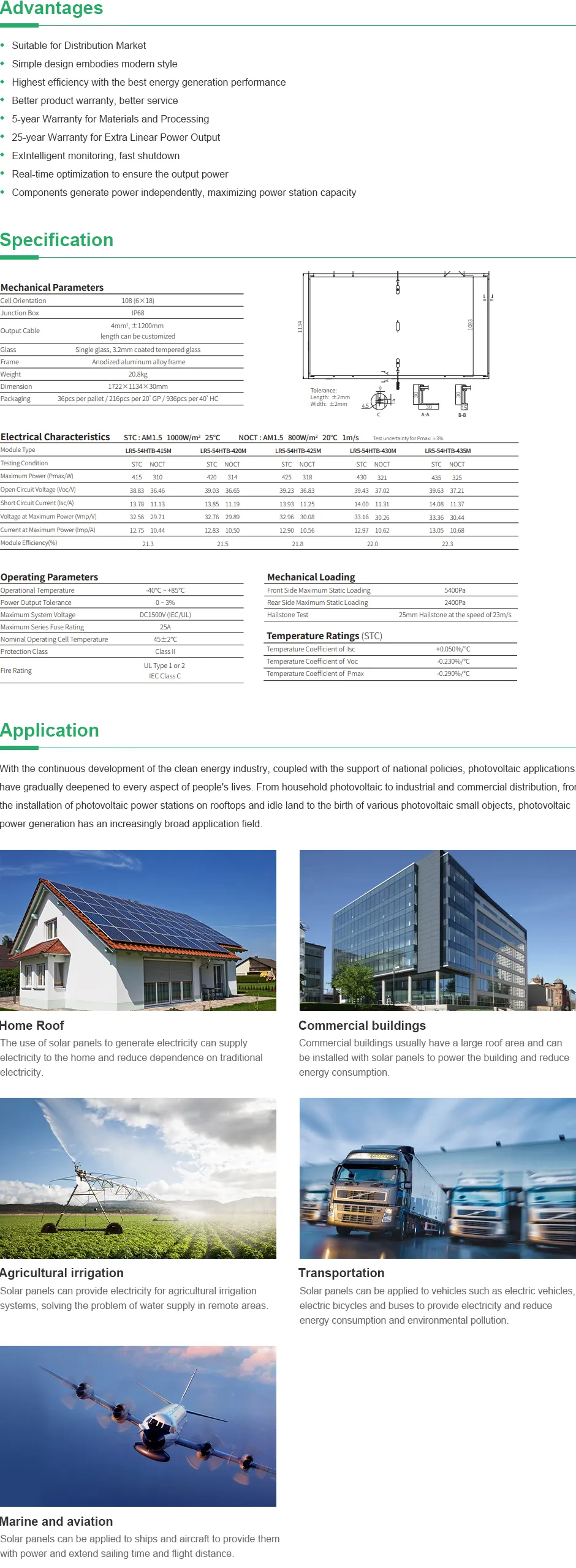Increasing Efficiency of Bifacial Solar Panels in Renewable Energy Solutions
The Efficiency of Bifacial Solar Panels A Comprehensive Analysis
In recent years, the solar energy industry has witnessed significant advancements, particularly with the introduction of bifacial solar panels. Unlike traditional solar panels, which only capture sunlight from one side, bifacial panels are designed to harness light from both the front and rear sides, enhancing their overall efficiency. This innovative technology is gaining popularity among homeowners and commercial users alike due to its impressive performance and potential for increased energy output.
Understanding Bifacial Solar Panels
Bifacial solar panels consist of solar cells sandwiched between two layers of transparent glass, allowing sunlight to penetrate both sides. The panels are typically mounted on elevated frames to ensure that the rear side has access to sunlight reflected off the ground surface. This reflection can come from various sources, including dirt, sand, concrete, or grass, which means the efficiency of bifacial panels can vary based on their installation environment.
Efficiency Gains Through Dual-Sided Absorption
The most notable feature of bifacial solar panels is their ability to increase energy generation by capturing reflected light. Studies indicate that these panels can achieve an efficiency increase of 10% to 30% compared to traditional, monofacial panels. The exact enhancement depends on several factors, including the albedo (reflectivity) of the ground surface and the angle of sunlight. For instance, installing bifacial panels over white or light-colored surfaces can significantly increase their energy output because these surfaces reflect more light.
Factors Influencing Bifacial Efficiency
While bifacial solar panels present an appealing opportunity for enhanced efficiency, several factors influence their effectiveness
1. Albedo Effect The ground surface’s albedo itself is a crucial determinant in how much light is reflected back to the rear side of the panel. High albedo surfaces, such as snow or white concrete, can drastically improve energy capture, making bifacial setups particularly advantageous in snowy regions or bright urban settings.
bifacial solar panels efficiency

2. Installation Height and Angle To maximize energy yield from the rear side of bifacial panels, adequate height and optimal tilt angles must be considered during installation. Elevated mounting allows more light to reach the rear surface without shading from the front side.
3. Weather Conditions Cloud cover, rain, and dust accumulation significantly affect the performance of bifacial solar panels. Wet conditions can enhance reflectivity, while dust or dirt accumulation can reduce efficiency. Regular maintenance is important to keep the panels clean and operating at peak performance.
Real-World Applications and Performance
The adoption of bifacial solar panels is growing across various sectors. Many large-scale solar farms utilize this technology to maximize energy generation, capitalizing on the available land and optimizing performance through strategic installation. For instance, research shows that solar farms equipped with bifacial technology not only generate more electricity but also achieve a better return on investment over time.
Residential applications are also emerging as homeowners seek more efficient and eco-friendly energy solutions. The potential savings on electricity bills and the reduced carbon footprint make bifacial panels an attractive option for sustainable living.
Challenges and Limitations
Despite their advantages, bifacial solar panels are not without challenges. The initial cost of bifacial solar panels and their installation can be higher than traditional panels. Additionally, not all environments yield the same performance benefits, leading to variability in return on investment based on location. Thus, thorough site assessments and financial analyses are essential before making the switch.
Conclusion
Bifacial solar panels represent a significant leap forward in solar technology, offering enhanced efficiency that can lead to increased energy production and sustainability. With their ability to absorb sunlight from multiple angles and capitalize on reflected light, bifacial panels are paving the way for a more efficient solar future. As advancements continue and costs decrease, bifacial solar panels are likely to become a standard choice for energy generation across various sectors. By investing in these innovative systems, both individuals and organizations can contribute to a greener planet while enjoying the benefits of renewable energy.
-
Unlocking Energy Freedom with the Off Grid Solar InverterNewsJun.06,2025
-
Unlock More Solar Power with a High-Efficiency Bifacial Solar PanelNewsJun.06,2025
-
Power Your Future with High-Efficiency Monocrystalline Solar PanelsNewsJun.06,2025
-
Next-Gen Solar Power Starts with Micro Solar InvertersNewsJun.06,2025
-
Harnessing Peak Efficiency with the On Grid Solar InverterNewsJun.06,2025
-
Discover Unmatched Efficiency with the Latest String Solar InverterNewsJun.06,2025







